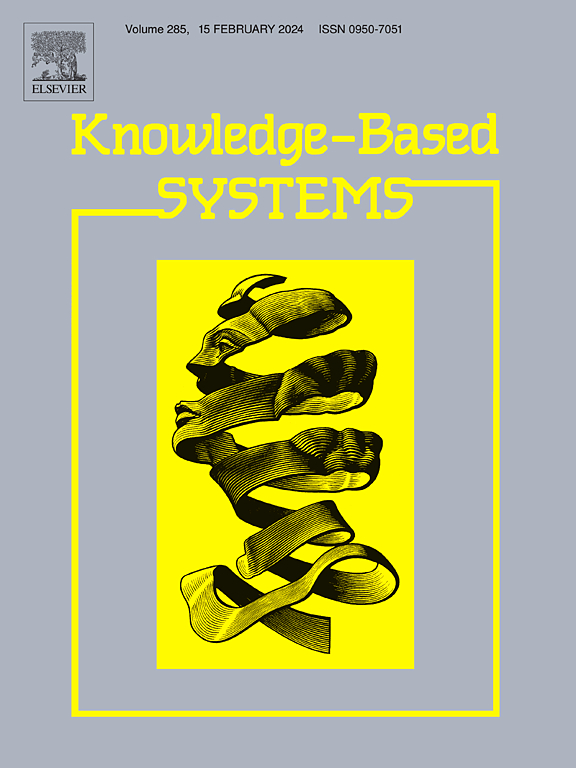A contrastive topic-aware attentive framework with label encodings for post-disaster resource classification
IF 7.6
1区 计算机科学
Q1 COMPUTER SCIENCE, ARTIFICIAL INTELLIGENCE
引用次数: 0
Abstract
Social media has emerged as a critical platform for disseminating real-time information during disasters. However, extracting actionable resource data, such as needs and availability, from this vast and unstructured content remains a significant challenge, leading to delays in identifying and allocating resources, with severe consequences for affected populations. This study addresses this challenge by investigating the potential of label and topic features, combined with text embeddings, to enhance the performance and efficiency of resource identification from social media data. We propose Crisis Resource Finder (CRFinder), a novel framework that leverages label encoding and topic features to extract richer contextual information, uncover hidden patterns, and reveal the true context of disaster resources. CRFinder incorporates novel techniques such as multi-level text-label attention and contrastive text-topic attention to capture semantic and thematic nuances within the textual data. Additionally, our approach employs topic injection and selective contextualization techniques to enhance thematic relevance and focus on critical information, which is pivotal for targeted relief efforts. Extensive experiments demonstrate the significant improvements achieved by CRFinder over existing state-of-the-art methods, with average weighted F1-score gains of 7.12%, 6.44%, and 7.89% on datasets from the Nepal earthquake, Italy earthquake, and Chennai floods, respectively. By providing timely and accurate insights into resource needs and availabilities, CRFinder has the potential to revolutionize disaster response efforts.
利用标签编码进行灾后资源分类的对比性主题感知注意框架
社交媒体已成为灾害期间传播实时信息的重要平台。然而,从这些庞大而非结构化的内容中提取可操作的资源数据(如需求和可用性)仍然是一项重大挑战,这会导致资源识别和分配的延迟,给受灾人口带来严重后果。本研究通过研究标签和主题特征与文本嵌入相结合的潜力,来提高从社交媒体数据中识别资源的性能和效率,从而应对这一挑战。我们提出了危机资源搜索器(Crisis Resource Finder,CRFinder)这一新颖的框架,它利用标签编码和主题特征来提取更丰富的上下文信息、发现隐藏的模式并揭示灾难资源的真实背景。CRFinder 采用了多层次文本标签关注和对比文本主题关注等新技术,以捕捉文本数据中的语义和主题细微差别。此外,我们的方法还采用了主题注入和选择性上下文化技术,以增强主题相关性并关注关键信息,这对于有针对性地开展救灾工作至关重要。广泛的实验证明,与现有的先进方法相比,CRFinder 取得了显著的改进,在尼泊尔地震、意大利地震和钦奈洪灾的数据集上,平均加权 F1 分数分别提高了 7.12%、6.44% 和 7.89%。通过及时准确地洞察资源需求和可用性,CRFinder 有可能彻底改变救灾工作。
本文章由计算机程序翻译,如有差异,请以英文原文为准。
求助全文
约1分钟内获得全文
求助全文
来源期刊

Knowledge-Based Systems
工程技术-计算机:人工智能
CiteScore
14.80
自引率
12.50%
发文量
1245
审稿时长
7.8 months
期刊介绍:
Knowledge-Based Systems, an international and interdisciplinary journal in artificial intelligence, publishes original, innovative, and creative research results in the field. It focuses on knowledge-based and other artificial intelligence techniques-based systems. The journal aims to support human prediction and decision-making through data science and computation techniques, provide a balanced coverage of theory and practical study, and encourage the development and implementation of knowledge-based intelligence models, methods, systems, and software tools. Applications in business, government, education, engineering, and healthcare are emphasized.
 求助内容:
求助内容: 应助结果提醒方式:
应助结果提醒方式:


